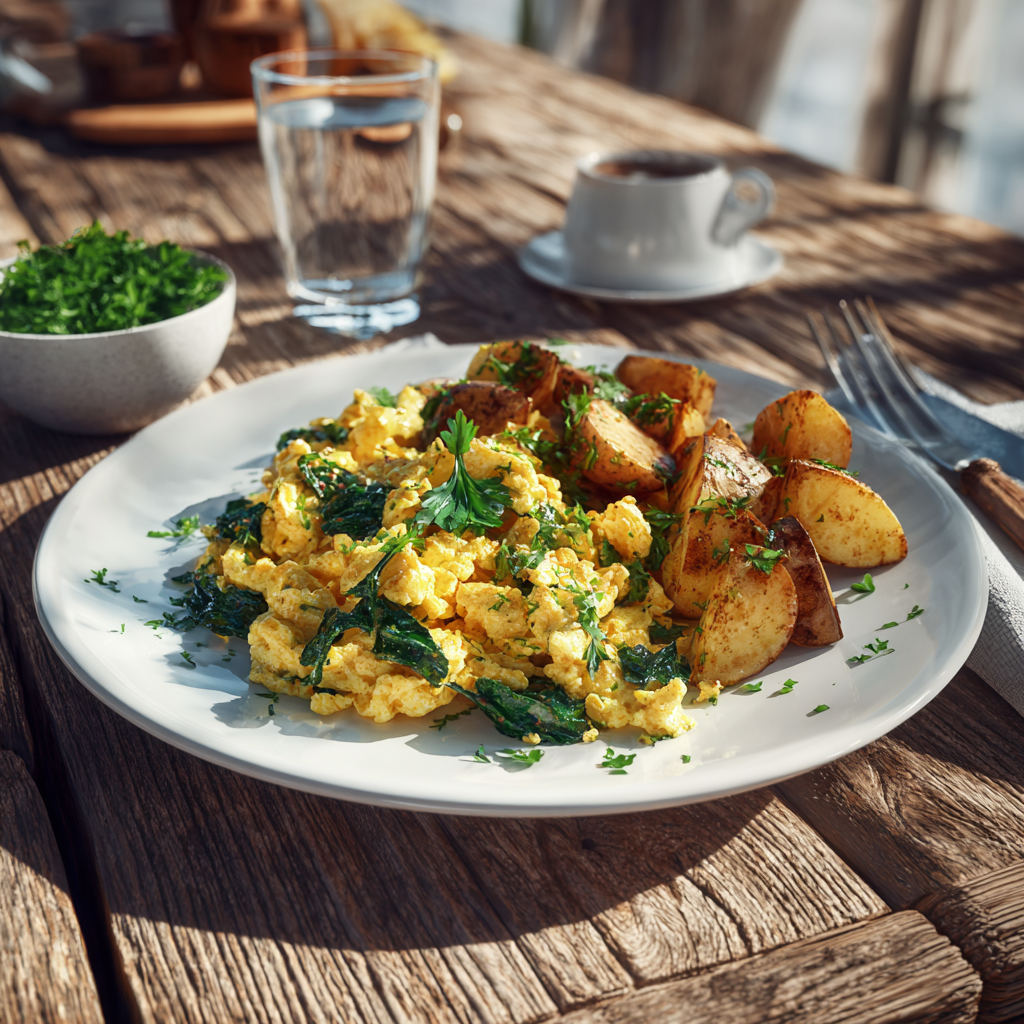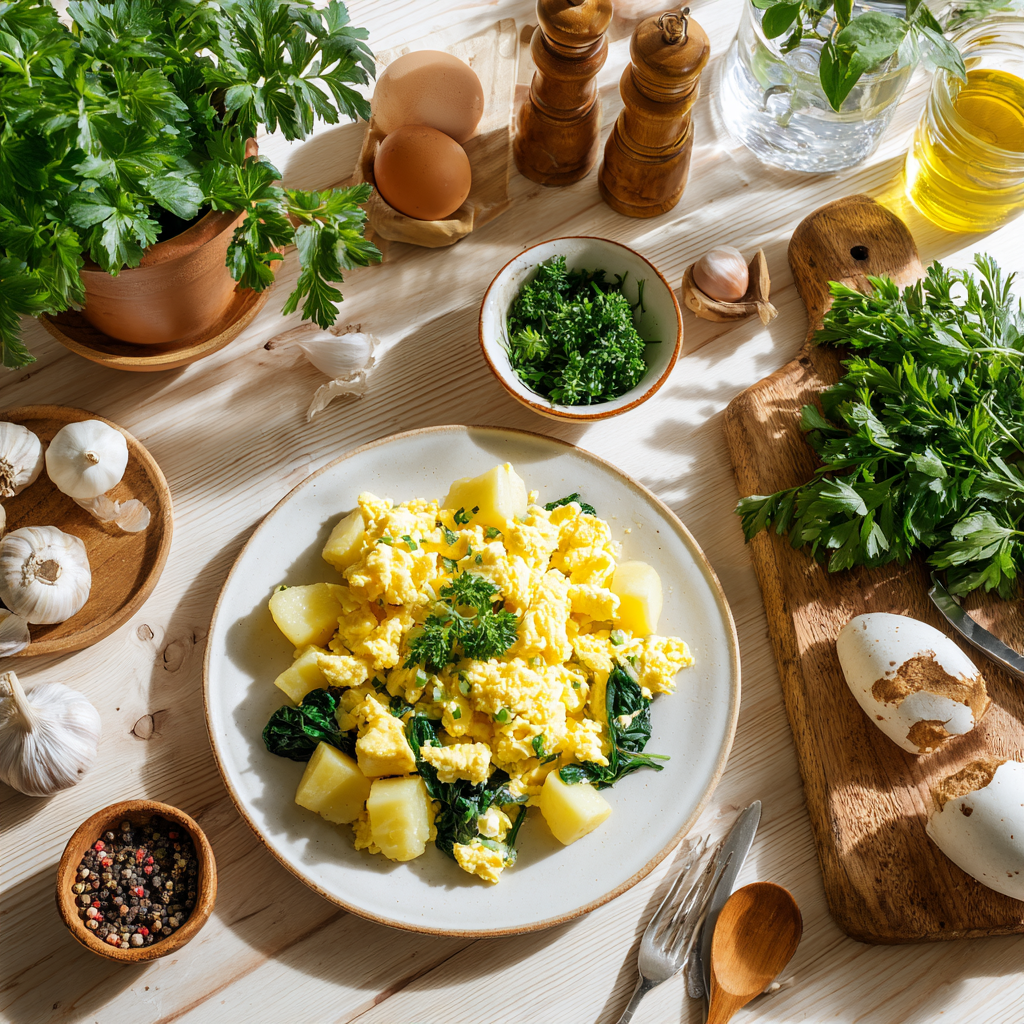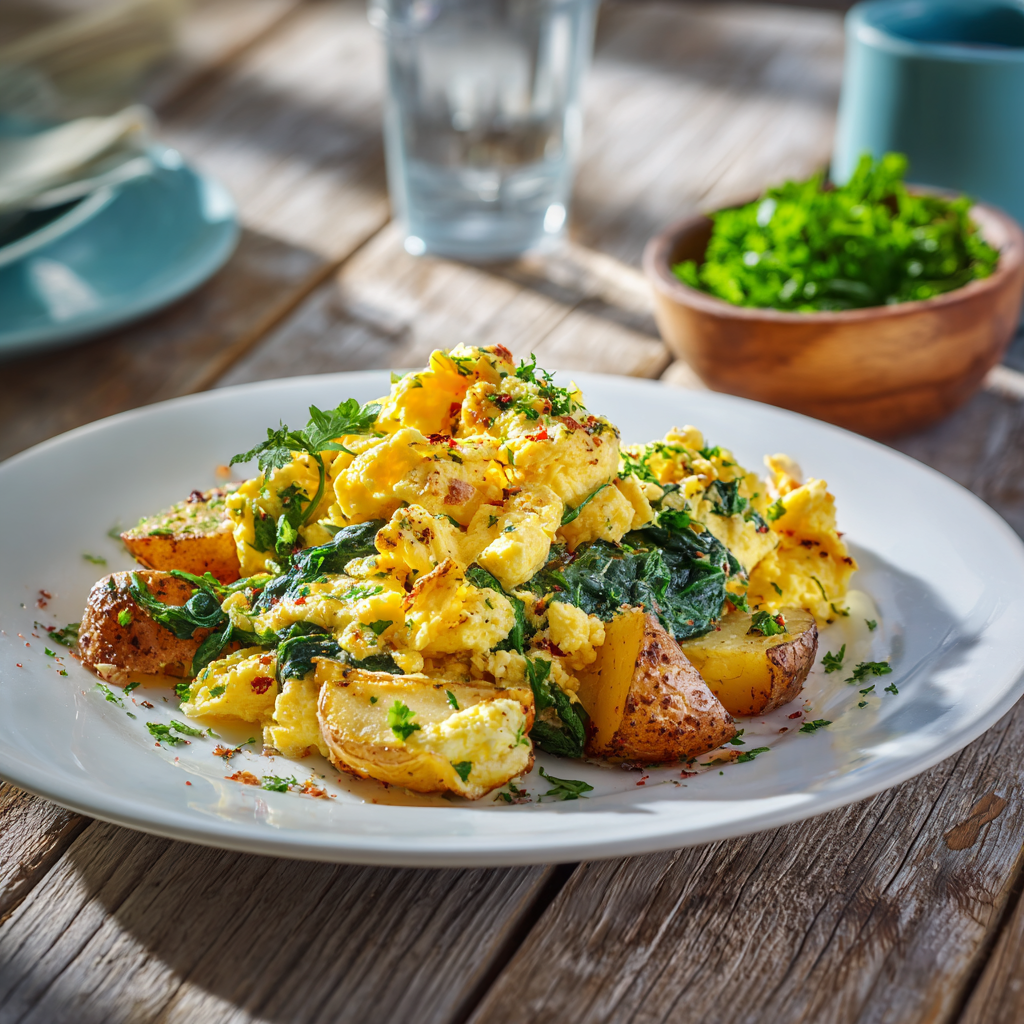
Why Low Histamine Breakfast Recipes Matter for a Better Day
I still remember the morning I woke up feeling like I hadn’t slept at all. My head throbbed, my stomach felt off, and I couldn’t focus. At first, I thought it was stress or just a bad night’s sleep. But after weeks of the same pattern, I realized something deeper was going on. That’s when I discovered histamine intolerance. It turns out some of my favorite breakfast foods were quietly making life harder.
Histamine intolerance happens when your body struggles to break down histamine, a compound found in many foods. For me, this meant symptoms like headaches, bloating, and fatigue—especially in the mornings. Managing histamine levels became key to feeling better. And breakfast? Well, breakfast became my secret weapon.
Why is breakfast so important? It sets the tone for your entire day. A low histamine breakfast gives your body a chance to reset and avoid triggering symptoms early on. I quickly learned that skipping breakfast or eating high-histamine foods made everything worse. So, I started experimenting with low histamine breakfast recipes. These meals not only helped me feel better but also became a source of joy and creativity in my daily routine.
If you’re wondering what to eat, don’t worry—I’ve got you covered. This article will share simple ideas like low histamine oatmeal recipes, easy egg dishes, and even tips for finding low histamine cereals. Whether you’re asking yourself, “Is oatmeal low histamine?” or “What bread can I eat with histamine intolerance?”, we’ll answer those questions too. By the end, you’ll have plenty of options to start your day right.
Why Choose Low Histamine Breakfast Options?
Starting your day with histamine-friendly foods makes a huge difference. Think about it: breakfast fuels your body after hours of fasting overnight. If you fill up on high-histamine foods, you might feel sluggish, achy, or foggy before lunch even rolls around. On the other hand, a thoughtful low histamine breakfast can give you energy and help you stay symptom-free.
Let’s talk about common symptoms of histamine intolerance. They include headaches, digestive issues, skin rashes, and anxiety. Some people even notice nasal congestion or heart palpitations after eating certain foods. These reactions often worsen with age or stress. That’s why choosing the right foods—like low fodmap low histamine breakfast options—can be a game-changer.
One question I hear a lot is, “Is oatmeal okay for histamine intolerance?” The short answer is yes—but with a few tweaks. Plain oats are generally safe because they’re naturally low in histamine. However, flavored instant oatmeal packets often contain added sugars, artificial flavors, or preservatives that could spike your histamine levels. Stick to plain rolled oats and add fresh toppings like bananas or blueberries. You can also try a low histamine oatmeal recipe with coconut milk and cinnamon for extra flavor.
Another popular query is, “Are eggs low histamine?” Eggs are usually fine unless you’re sensitive to them personally. Boiled or poached eggs tend to work best since frying can increase histamine content due to oxidation during cooking. Scrambled eggs cooked gently over low heat are another good option. Pair them with veggies like spinach or zucchini for a nutrient-packed meal.
Here’s a quick list of simple low histamine breakfast recipes:
- Oatmeal topped with fresh fruit and a drizzle of honey
- Scrambled eggs with sautéed mushrooms and herbs
- A smoothie made with almond milk, frozen mango, and chia seeds
- Toasted gluten-free bread with avocado and a sprinkle of sea salt
- Rice cakes spread with sunflower seed butter and sliced banana
For those who prefer cereal, look for brands without added colors, flavors, or preservatives. Many people ask, “Are Cheerios low histamine?” Unfortunately, most commercial cereals—including Cheerios—are processed in ways that may raise their histamine levels. Instead, opt for puffed rice or plain corn flakes. Always check labels carefully to ensure no hidden triggers sneak into your bowl.
Beyond managing symptoms, these breakfasts can support weight loss goals too. Many low histamine breakfast recipes for weight loss focus on whole, unprocessed ingredients that keep you full longer. For example, swapping sugary granola for a bowl of plain yogurt (if tolerated) with fresh berries cuts calories while keeping histamine levels in check.
The truth is, living with histamine intolerance doesn’t mean giving up tasty food. With a little planning, you can enjoy delicious meals every morning. In the next sections, we’ll dive deeper into specific recipes and tips to make your breakfast routine easier—and more enjoyable.
Tasty Low Histamine Breakfast Ideas
Alright, so we’ve covered the basics of why low histamine breakfasts matter and how they can set you up for a better day. Now let’s dive into the fun part—what to actually eat! Trust me, this is where things get exciting. You’d be surprised how many delicious options are out there once you know what to look for. Let’s start with a classic: oatmeal.
1. Low Histamine Oatmeal Recipe
Oatmeal might seem boring at first glance, but it’s a blank canvas waiting for your creativity. I love starting my mornings with a warm bowl of oats because it’s filling, comforting, and super easy to customize. Plus, it’s one of the best answers to the question, “What’s a good low histamine breakfast?”
Here’s how I make mine:
- Start with half a cup of plain rolled oats (not instant!). Instant oats often have additives that can spike histamine levels.
- Cook them in water or a milk alternative like almond milk or coconut milk. Dairy can be tricky for some folks, so I stick to plant-based options.
- Add a pinch of cinnamon while cooking—it adds warmth without any histamine drama.
- Top it off with fresh fruit like blueberries, banana slices, or mango chunks. These are all low-histamine winners.
- If you want a little sweetness, drizzle on some raw honey or maple syrup. Both are safe bets.
By the way, if you’re dealing with other dietary restrictions, this recipe works wonders as a breakfast recipe for GERD too. The blandness of oats makes it gentle on the stomach while still being satisfying.
Safe Toppings for Your Oatmeal
When it comes to toppings, keep it simple. Fresh fruits like pears, apples, and melons are excellent choices. Nuts like almonds or walnuts are usually fine unless you’re sensitive to them. Just steer clear of dried fruits—they’re often high in histamine. Oh, and skip the chocolate chips. As much as I love them, they’re not exactly histamine-friendly.
2. Low FODMAP and Low Histamine Breakfast Combos
Funny enough, many people who struggle with histamine intolerance also deal with FODMAP sensitivities. If that’s you, don’t worry—I’ve got ideas that tick both boxes. One of my go-to combos is rice cakes topped with sunflower seed butter and a few slices of banana. It’s crunchy, creamy, and totally satisfying.
Another favorite? Lactose-free yogurt paired with chia seeds and fresh berries. This dish feels fancy but takes about three minutes to throw together. And if you’re vegan or avoiding candida overgrowth, check out these candida diet vegan breakfast recipes. They’re packed with low-histamine ingredients that won’t leave you feeling deprived.
For something heartier, try scrambled eggs cooked gently over low heat. Pair them with steamed spinach or zucchini for extra nutrients. Eggs are versatile and work well in candida diet breakfast recipes, making them a great option if you’re juggling multiple dietary needs.
Simple Yet Satisfying Ideas
Sometimes, simplicity is key. A slice of gluten-free toast with mashed avocado and a sprinkle of sea salt hits the spot without overwhelming your system. Or grab a handful of pumpkin seeds and pair them with a piece of fruit for a quick snack-like breakfast. These ideas prove that eating low histamine doesn’t mean sacrificing flavor or convenience.
3. Are Cheerios Low Histamine?
Now, here’s the thing about cereal—it’s a breakfast staple for many, but not all brands play nice with histamine intolerance. Take Cheerios, for example. While they’re marketed as healthy, their processing methods and ingredient list raise red flags. Most commercial cereals undergo fermentation or include preservatives that can increase histamine levels. So no, Cheerios probably aren’t the best choice.
But hey, don’t despair! There are alternatives. Puffed rice cereal is a lifesaver—it’s light, neutral, and free from funky additives. Plain corn flakes are another solid option, though you’ll need to read labels carefully to avoid hidden sugars or artificial flavors. For those wondering, “What bread can I eat with histamine intolerance?”—gluten-free loaves made from rice flour or almond flour tend to work well. Just double-check for sneaky ingredients.
Low Histamine Cereal Hacks
If you’re craving something more substantial than plain puffed rice, try mixing your cereal with lactose-free yogurt and fresh fruit. Quinoa flakes are another fantastic base for a hearty bowl. In fact, quinoa is such a powerhouse that I often turn to candida diet quinoa breakfast recipes when I need inspiration. It’s nutty, nutritious, and oh-so-satisfying.
Final Thoughts Before We Wrap Up This Section
Living with histamine intolerance can feel restrictive at times, but trust me—it’s possible to enjoy breakfast again. Whether you’re whipping up a cozy bowl of oatmeal, experimenting with low FODMAP combos, or finding new cereals to love, there’s no shortage of tasty options. And remember, small tweaks can make a big difference. Swapping out one high-histamine ingredient for a safer alternative might seem minor, but it adds up over time.
I’ll admit, I used to miss certain foods when I first started adjusting my diet. But now? I genuinely look forward to breakfast. It’s become a chance to nourish myself and start the day on the right foot. So give these ideas a shot—you might just discover your new favorite meal!
Low Histamine Breakfast Recipes for Weight Loss
Let’s talk about something that’s been on my mind lately—how to keep breakfast both satisfying and waistline-friendly. I don’t know about you, but when I’m trying to shed a few pounds, I tend to default to boring, bland meals. You know the drill: plain toast, a sad banana, maybe some watered-down tea. But guess what? It doesn’t have to be like that. With a little creativity, you can whip up low histamine breakfast recipes for weight loss that actually feel indulgent.
Here’s the thing: losing weight doesn’t mean starving yourself or cutting out all the good stuff. Instead, it’s about finding balance. For instance, oats are a fantastic base for weight loss because they’re high in fiber and keep you full longer. But instead of just dumping a handful of berries on top (which is fine, by the way), why not try layering them with chia seeds and coconut yogurt? It’s creamy, crunchy, and feels like dessert without the sugar crash later.
Another tip? Portion control matters. I used to think I could eat an entire bowl of oatmeal and still call it healthy. Spoiler alert: I couldn’t. Now, I stick to smaller portions and fill the rest of my plate with fresh veggies or lean proteins. Scrambled eggs cooked gently over low heat pair beautifully with steamed spinach. It’s light yet filling, and honestly? It tastes amazing.
By the way, if you’re worried about monotony, don’t be. There are so many ways to mix things up. Try swapping your usual oatmeal for quinoa flakes one morning. Or ditch grains altogether and go for a smoothie made with almond milk, frozen mango, and a scoop of protein powder. The key is to focus on whole, unprocessed ingredients that won’t spike your histamine levels—or your calorie count.
Balancing Nutrition While Keeping Histamine Levels Low
Nutrition is where it gets even more interesting. Sure, avoiding histamine triggers is important, but so is making sure you’re getting enough vitamins and minerals. One trick I’ve learned is to load up on colorful fruits and veggies whenever possible. They’re packed with antioxidants and nutrients that support overall health—and yes, they’re usually low in histamine too!
For example, blueberries are a powerhouse of antioxidants and taste incredible on top of oatmeal or blended into a smoothie. Same goes for mangoes, which add natural sweetness without refined sugars. And if you’re looking for something savory, zucchini and carrots make awesome additions to egg dishes. Just sauté them lightly to retain their nutrients and flavor.
Funny enough, fats play a big role here too. Healthy fats like avocado or olive oil help keep you satiated and provide essential fatty acids your body needs. I love spreading mashed avocado on gluten-free toast or drizzling olive oil over roasted veggies. Pro tip: always use fresh oils, as older ones can sometimes develop compounds that might trigger histamine reactions.
Oh, and let’s not forget hydration! Starting your day with a glass of water can do wonders for digestion and metabolism. If plain water feels blah, add a slice of lemon or cucumber for a refreshing twist. Trust me, your body will thank you.
Transitioning to Lunch: What’s Next?
Alright, so we’ve nailed breakfast. But what happens when lunch rolls around? Honestly, this is where consistency becomes key. A well-planned low histamine lunch keeps your energy levels stable and prevents those dreaded afternoon slumps. Think salads with grilled chicken, veggie-packed soups, or even leftovers from dinner.
If you’re stumped for ideas, check out some low histamine recipes online. Many sites offer creative solutions for every meal of the day—not just breakfast. Personally, I like prepping a big batch of quinoa salad at the start of the week. It’s versatile, easy to customize, and perfect for busy days when cooking feels impossible.
And hey, don’t underestimate snacks either. Having a stash of low-histamine options like rice cakes, fresh fruit, or homemade trail mix can save you from reaching for something less ideal. Preparation really is half the battle.
Frequently Asked Questions (FAQ)
How to make eggs low in histamine?
Cook eggs gently over low heat to minimize oxidation, which can increase histamine levels. Boiled or poached eggs are great choices, while frying should be avoided if possible.
Are eggs low histamine?
Yes, eggs are generally considered low histamine unless you have a personal sensitivity. Always pay attention to how your body reacts after eating them.
Is oatmeal okay for histamine intolerance?
Absolutely! Plain rolled oats are naturally low in histamine. Just avoid instant varieties with added flavors or preservatives, as these can trigger symptoms.
What bread can I eat with histamine intolerance?
Look for gluten-free options made from rice flour or almond flour. Always read labels carefully to avoid hidden additives that might raise histamine levels.
Are Cheerios low histamine?
Unfortunately, no. Most commercial cereals, including Cheerios, undergo processing methods that may increase histamine content. Opt for puffed rice or plain corn flakes instead.
What’s a good low histamine breakfast?
Oatmeal topped with fresh fruit and nuts, scrambled eggs with veggies, or a smoothie made with almond milk and frozen mango are all excellent choices.
How can I make my breakfasts more exciting?
Experiment with different toppings, textures, and flavors. Swap oats for quinoa flakes, add spices like cinnamon, or include unique ingredients like sunflower seed butter.
Can I lose weight with low histamine breakfasts?
Definitely! Focus on whole, unprocessed foods like oats, eggs, and fresh produce. These keep you full longer and support weight loss goals.
Why does histamine intolerance affect mornings so much?
Histamine levels naturally rise overnight, and eating high-histamine foods at breakfast can worsen symptoms like fatigue and brain fog.
Where can I find more low histamine recipes?
Explore blogs, cookbooks, and websites dedicated to dietary restrictions. Many resources offer creative ideas for every meal of the day.
Final Thoughts
You know what I love most about this journey? It’s taught me to slow down and appreciate food again. Breakfast isn’t just fuel—it’s a chance to care for myself and set the tone for the day ahead. Whether you’re managing histamine intolerance, aiming for weight loss, or simply exploring healthier habits, there’s always room to experiment and grow.
So here’s my challenge to you: pick one new recipe to try this week. Maybe it’s a smoothie, a fancy bowl of oatmeal, or even a quinoa salad. Whatever it is, approach it with curiosity and joy. After all, knowledge is power, and you’re already steps ahead.

Low Histamine Breakfast Recipes
Ingredients
Equipment
Method
- Start with half a cup of plain rolled oats (not instant).
- Cook them in water or a milk alternative like almond milk or coconut milk.
- Add a pinch of cinnamon while cooking.
- Top it off with fresh fruit like blueberries, banana slices, or mango chunks.
- Drizzle raw honey or maple syrup for sweetness if desired.


